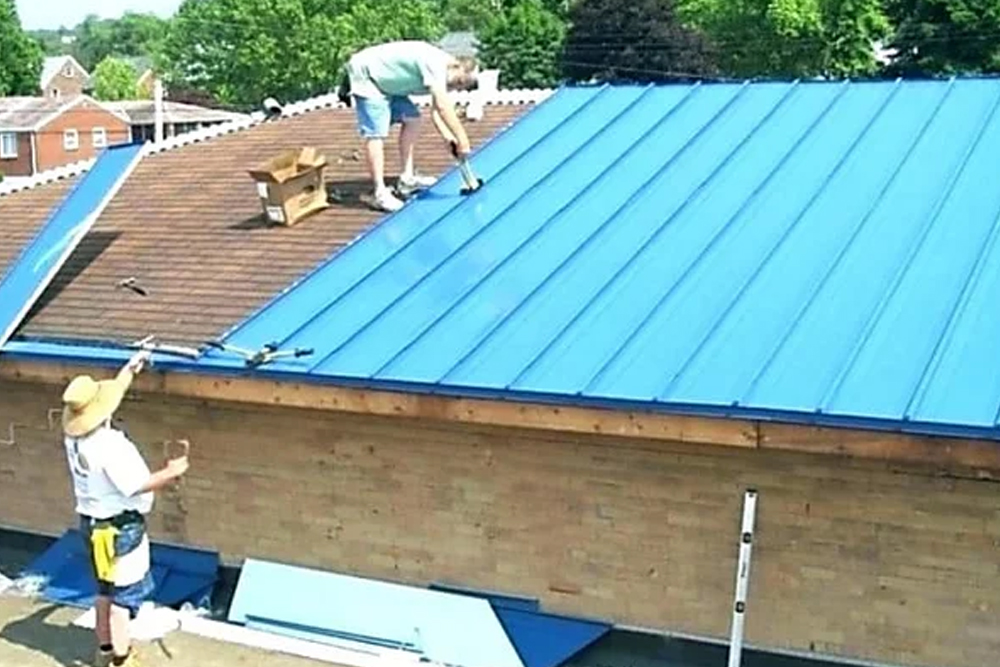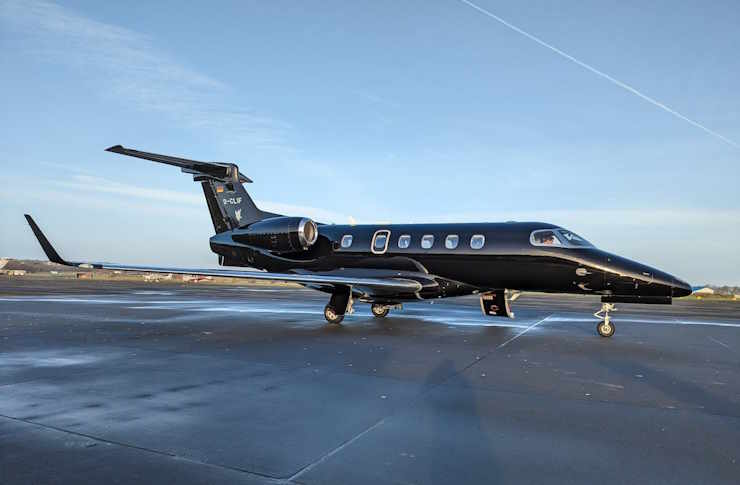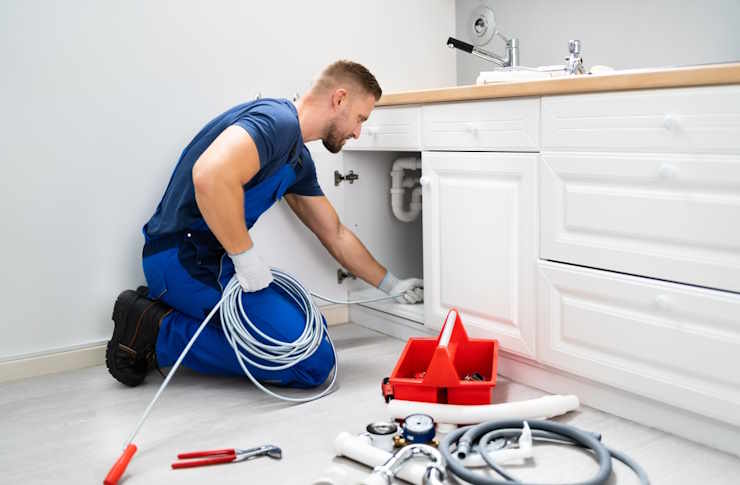Transform Your Home with Metal Roofing: The Ultimate Investment for 2025
Metal roofing has emerged as a popular choice for homeowners seeking durability, energy efficiency, and long-term value. As we move into 2025, more property owners are considering this roofing solution for its impressive lifespan, environmental benefits, and aesthetic versatility. Understanding the advantages, available options, and how metal roofing compares to traditional materials can help you make an informed decision about your home improvement project.

When considering a roofing upgrade or replacement, metal roofing stands out as a compelling option that combines practicality with modern aesthetics. Unlike traditional roofing materials, metal roofs offer exceptional longevity and performance characteristics that make them increasingly attractive to homeowners. With advancements in manufacturing and design, metal roofing now comes in various styles and finishes that can complement virtually any architectural design while providing superior protection for your home.
What Are the Key Metal Roofing Benefits?
Metal roofing benefits extend far beyond simple weather protection. One of the most significant advantages is longevity, with metal roofs typically lasting 40 to 70 years compared to traditional asphalt shingles that may need replacement every 12 to 20 years. This extended lifespan translates to fewer replacements over the lifetime of your home, reducing long-term maintenance costs and environmental waste.
Energy efficiency represents another major benefit. Metal roofs reflect solar radiant heat, which can reduce cooling costs by 10 to 25 percent during warm months. Many metal roofing products feature special reflective coatings that enhance this effect, making them particularly valuable in regions with hot climates. Additionally, metal roofs are highly resistant to extreme weather conditions, including high winds, heavy snow, and hail, providing superior protection during severe weather events.
Metal roofing is also environmentally friendly. Most metal roofing materials contain 25 to 95 percent recycled content and are 100 percent recyclable at the end of their lifespan. This sustainability factor appeals to environmentally conscious homeowners who want to reduce their ecological footprint. Furthermore, metal roofs are lightweight, putting less stress on your home’s structure and potentially eliminating the need for additional structural support during installation.
What Metal Roofing Options Are Available?
Metal roofing options have expanded significantly in recent years, offering homeowners diverse choices to match their aesthetic preferences and functional requirements. Standing seam metal roofing features vertical panels with concealed fasteners, creating a sleek, modern appearance while providing excellent weather resistance. This style is particularly popular for contemporary and industrial-style homes.
Metal shingles and tiles offer the appearance of traditional roofing materials while delivering metal’s superior performance characteristics. These options can mimic the look of wood shakes, slate, or clay tiles, allowing homeowners to achieve a classic aesthetic without sacrificing durability. Corrugated metal panels provide a more rustic or agricultural appearance and are often chosen for barns, sheds, or homes with a farmhouse aesthetic.
Material choices include aluminum, steel, copper, and zinc. Aluminum is lightweight and naturally corrosion-resistant, making it ideal for coastal environments. Steel roofing, often coated with zinc or a zinc-aluminum alloy, offers excellent strength and is the most common choice for residential applications. Copper develops a distinctive patina over time and can last over 100 years, though it comes at a premium price. Zinc is self-healing and extremely durable, with a lifespan comparable to copper.
Color options have also expanded dramatically, with manufacturers offering dozens of finishes from traditional grays and browns to bold blues, greens, and reds. Many products feature advanced coating systems that resist fading and chalking, ensuring your roof maintains its appearance for decades.
How Does Metal Roofing vs Shingles Compare?
The metal roofing vs shingles debate centers on several key factors including cost, durability, maintenance, and aesthetic appeal. Initial installation costs for metal roofing typically range from two to three times higher than asphalt shingles. However, when considering the total cost of ownership over the roof’s lifetime, metal roofing often proves more economical due to its extended lifespan and minimal maintenance requirements.
Asphalt shingles remain the most common roofing material in many regions due to their lower upfront cost and familiar appearance. They are relatively easy to install and repair, and most roofing contractors have extensive experience working with them. However, shingles are more susceptible to wind damage, algae growth, and deterioration from UV exposure. They also contribute significantly more waste to landfills due to their shorter lifespan and non-recyclable composition.
Metal roofs excel in extreme weather resistance, with many products rated for winds up to 140 miles per hour. They shed snow and ice more effectively than shingles, reducing the risk of ice dams and water infiltration. Metal roofs are also fire-resistant, earning a Class A fire rating, which can potentially lower homeowners insurance premiums in some areas.
Noise is sometimes cited as a concern with metal roofing, but proper installation with solid sheathing and adequate insulation typically eliminates any noticeable difference in sound levels compared to shingle roofs. Additionally, modern metal roofing systems are designed to expand and contract quietly as temperatures change, addressing concerns about thermal movement noise.
Understanding Metal Roofing Installation Costs
When budgeting for a metal roofing project, understanding the cost breakdown helps homeowners make informed decisions. Installation costs vary based on material choice, roof complexity, geographic location, and labor rates. Below is a comparison of typical metal roofing costs by material type.
| Material Type | Cost per Square Foot | Expected Lifespan | Key Characteristics |
|---|---|---|---|
| Steel (Galvanized) | $5.50 - $12.00 | 40-60 years | Durable, affordable, requires coating |
| Aluminum | $8.00 - $14.00 | 50-70 years | Lightweight, corrosion-resistant |
| Copper | $15.00 - $30.00 | 70-100+ years | Premium appearance, develops patina |
| Zinc | $12.00 - $20.00 | 60-100 years | Self-healing, eco-friendly |
| Standing Seam | $9.00 - $16.00 | 40-70 years | Modern look, excellent weather protection |
Prices, rates, or cost estimates mentioned in this article are based on the latest available information but may change over time. Independent research is advised before making financial decisions.
These estimates typically include materials and professional installation. Additional costs may include roof tear-off, structural reinforcement if needed, underlayment, trim work, and disposal fees. Geographic location significantly impacts labor costs, with urban areas and regions with higher living costs generally commanding premium rates. Obtaining multiple quotes from licensed, insured contractors ensures competitive pricing and quality workmanship.
Maintenance and Care Considerations
While metal roofing requires minimal maintenance compared to other roofing materials, some routine care ensures optimal performance and longevity. Annual inspections help identify potential issues such as loose fasteners, damaged panels, or debris accumulation. Clearing gutters and removing leaves or branches prevents water backup and maintains proper drainage.
Scratches or damaged coatings should be addressed promptly to prevent corrosion, particularly with steel roofing products. Most manufacturers offer touch-up paint that matches their color systems. Inspecting and maintaining sealants around penetrations such as vents, chimneys, and skylights prevents water infiltration. Walking on metal roofs should be done carefully to avoid denting or damaging panels, and professional inspection services are recommended for steep or complex roof designs.
Many metal roofing manufacturers offer warranties ranging from 30 to 50 years, covering material defects and sometimes including finish warranties that guarantee against excessive fading or chalking. Understanding warranty terms and maintaining proper documentation ensures coverage remains valid throughout the roof’s lifespan.
Making the Right Choice for Your Home
Selecting metal roofing for your home represents a significant investment that offers substantial returns in durability, energy efficiency, and aesthetic appeal. Evaluating your specific needs, budget, and long-term plans helps determine whether metal roofing aligns with your goals. Consider factors such as your home’s architectural style, local climate conditions, and your planned length of homeownership when making this decision.
Working with experienced contractors who specialize in metal roofing installation ensures proper technique and optimal performance. Requesting references, verifying licensing and insurance, and reviewing previous projects helps identify qualified professionals. As metal roofing continues to gain popularity in 2025, the combination of improved manufacturing techniques, expanded design options, and proven performance makes it a compelling choice for homeowners seeking a roofing solution that balances immediate benefits with long-term value.




